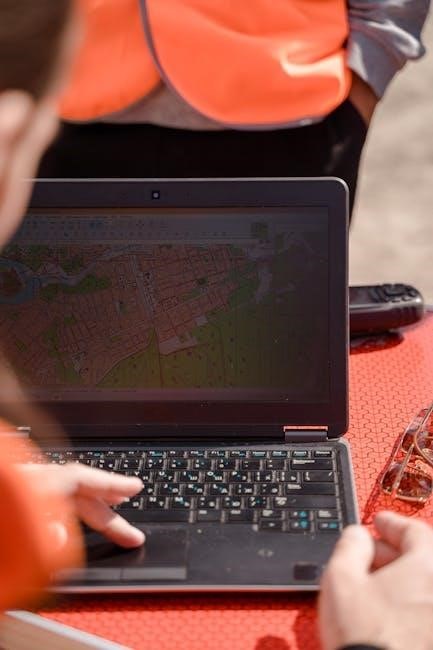gis tutorial for arcgis pro 2.8

ArcGIS Pro 2.8, a leading GIS software, offers comprehensive tools for
mapping, analysis, and data management. GIS Tutorial for ArcGIS Pro 2.8
serves as an excellent resource for both beginners and experienced users.

Getting Started with ArcGIS Pro 2.8
To begin with ArcGIS Pro 2.8, familiarize yourself with the user
interface and essential workflows. GIS Tutorial for ArcGIS Pro 2.8 provides
step-by-step guidance on basic operations, like adding and navigating data.
Navigating the User Interface
Successfully navigating the ArcGIS Pro 2.8 user interface is crucial for
efficient GIS workflows. The interface comprises several key components, each
designed to facilitate specific tasks. The ribbon, located at the top,
provides access to a wide range of tools organized into tabs like Map,
Insert, Analysis, and View. The Contents pane on the left displays the layers
in your map or scene, allowing you to manage their visibility and properties.
The Catalog pane provides access to your data, including geodatabases, shapefiles,
and other spatial data sources. Use the map view to interactively explore
your geographic data. At the bottom, the Geoprocessing pane enables access
to a vast library of tools for spatial analysis. Mastering these elements
will significantly enhance your productivity within ArcGIS Pro 2.8.
Consult GIS Tutorial for ArcGIS Pro 2.8 for detailed guidance.
Adding and Managing Data
Adding and managing data are fundamental aspects of working with
ArcGIS Pro 2.8. You can add data from various sources, including
geodatabases, shapefiles, raster datasets, and online services like
ArcGIS Online. To add data, use the “Add Data” button on the Map tab or
drag and drop data directly into the map view from the Catalog pane. Once
added, data layers appear in the Contents pane, where you can manage their
properties, such as visibility, symbology, and labeling. ArcGIS Pro
2.8 allows you to create new geodatabases and feature classes to store
and organize your spatial data. You can also edit existing data using the
editing tools available in the Edit tab. Furthermore, ArcGIS Pro 2.8
supports working with attribute tables, allowing you to view, edit, and
analyze attribute data associated with your spatial features. Refer to GIS
Tutorial for ArcGIS Pro 2.8 for more in-depth instructions.

Core Functionalities in ArcGIS Pro 2.8
ArcGIS Pro 2.8 offers map authoring, symbolizing, labeling,
geoprocessing, and spatial analysis. These functionalities are essential for
GIS professionals and are detailed in the GIS Tutorial for ArcGIS Pro 2.8.
Map Authoring and Design
ArcGIS Pro 2.8 provides robust capabilities for map authoring and design,
allowing users to create visually appealing and informative maps. The process
involves selecting appropriate basemaps, adding relevant data layers, and
arranging map elements effectively. Key features include the ability to
customize map layouts, insert map surrounds such as legends and scale bars,
and manage map properties.
The GIS Tutorial for ArcGIS Pro 2.8 offers step-by-step guidance on
leveraging these tools to produce professional-quality maps. Users can
explore various map projections and coordinate systems to ensure accurate
spatial representation. Additionally, the software supports dynamic mapping,
enabling real-time updates and interactive exploration. With ArcGIS Pro
2.8, users can design maps for diverse purposes, including web mapping,
print publications, and presentations. The tutorial covers best practices for
map design, emphasizing clarity, accuracy, and effective communication of
spatial information.
Symbolizing and Labeling Maps
ArcGIS Pro 2.8 offers extensive tools for symbolizing and labeling maps,
crucial for conveying information effectively. Symbology allows users to
visually represent features based on attributes, using options like unique
values, graduated colors, and proportional symbols. Labeling dynamically
places text on the map to identify features, with customizable fonts, sizes,
and placement rules.
The GIS Tutorial for ArcGIS Pro 2.8 guides users through these
processes, teaching how to create thematic maps that highlight specific
patterns or trends. Users learn to manage label classes, resolve conflicts,
and ensure readability. The tutorial covers advanced techniques, such as using
SQL queries for conditional labeling and creating custom symbol sets. Effective
symbology and labeling enhance map clarity, making it easier for viewers to
interpret spatial data. ArcGIS Pro 2.8 provides a range of options to
tailor map aesthetics, ensuring maps are both informative and visually
appealing.

Advanced Techniques in ArcGIS Pro 2.8
ArcGIS Pro 2.8 allows the user to explore 3D maps,
geoprocessing, and spatial analysis. The GIS Tutorial for ArcGIS Pro 2.8
provides in-depth knowledge for advanced users.
Working with 3D Maps
ArcGIS Pro 2.8 introduces users to the captivating realm of three-dimensional
(3D) mapping, allowing for enhanced visualization and analysis of spatial
data. The GIS Tutorial for ArcGIS Pro 2.8 guides the user through the process
of effectively utilizing 3D maps within the software. Users can construct
realistic representations of landscapes, urban environments, and geological
features by integrating elevation data, imagery, and 3D models. The software
offers tools for creating perspective views, fly-through animations, and
interactive 3D scenes.
These capabilities enable users to gain deeper insights into spatial
relationships and patterns, making it easier to communicate complex
information to stakeholders. Advanced techniques in ArcGIS Pro 2.8 enable
the user to perform sophisticated spatial analysis in 3D environments, such
as viewshed analysis, shadow casting, and volumetric calculations.
The GIS Tutorial for ArcGIS Pro 2.8 offers step-by-step guidance on
mastering these techniques, empowering users to unlock the full potential of
3D mapping in their GIS projects.
Geoprocessing and Spatial Analysis
ArcGIS Pro 2.8 provides a robust suite of geoprocessing tools and spatial
analysis techniques to unlock the hidden insights within your geographic data.
The GIS Tutorial for ArcGIS Pro 2.8 guides you through the essential
workflows for conducting sophisticated spatial analysis, enabling you to
answer complex questions and make informed decisions. Explore a vast library
of geoprocessing tools, including buffers, overlays, spatial statistics, and
network analysis, to transform raw data into actionable intelligence.
Learn how to automate repetitive tasks by building geoprocessing models and
scripts, streamlining your workflows and enhancing productivity. Discover
advanced spatial analysis techniques, such as suitability modeling, hot spot
analysis, and predictive mapping, to identify patterns, trends, and
relationships in your data.
Whether you’re analyzing crime patterns, assessing environmental impacts, or
optimizing resource allocation, ArcGIS Pro 2.8 provides the tools and
capabilities to unlock the full potential of your spatial data.

Sharing and Collaboration in ArcGIS Pro 2.8
ArcGIS Pro 2.8 enhances collaboration through sharing maps and data via
ArcGIS Online. The GIS Tutorial guides users in publishing and
configuring maps for broader access and teamwork.
Publishing Maps to ArcGIS Online
Publishing maps to ArcGIS Online from ArcGIS Pro 2.8 is streamlined
through intuitive workflows detailed in the GIS Tutorial. This process
allows users to share their cartographic creations with a wider audience,
fostering collaboration and information dissemination. The tutorial covers
essential steps, ensuring maps are properly prepared for online use.
Users learn how to optimize map layers for web performance, configure pop-ups
for informative interactions, and set appropriate sharing permissions. The
guide also addresses crucial aspects like metadata management, ensuring
published maps are easily discoverable and understandable. By following the
GIS Tutorial, users gain proficiency in transforming desktop maps into
engaging and accessible online resources.
Moreover, the tutorial emphasizes best practices for maintaining data integrity
and security during the publishing process. This includes understanding the
implications of different sharing options and implementing appropriate access
controls.
Configuring Maps in ArcGIS Online
Once maps are published to ArcGIS Online from ArcGIS Pro 2.8,
configuring them for optimal viewing and interaction is key, and the
GIS Tutorial guides users through this process. This involves customizing
the map’s appearance, adding interactive elements, and setting appropriate
permissions. Users can modify the basemap, adjust layer visibility, and
configure pop-ups to display attribute information.
The tutorial emphasizes the importance of creating a user-friendly experience
by designing intuitive interfaces and clear navigation. It covers how to add
widgets, such as scale bars, legends, and overview maps, to enhance map
understanding. Furthermore, the GIS Tutorial demonstrates how to
configure search functionality, allowing users to quickly locate specific
features within the map.
By following the tutorial’s step-by-step instructions, users can transform
basic maps into dynamic and informative online resources. This includes
learning how to manage user access and set sharing permissions to control who
can view and interact with the map.
Learning Resources for ArcGIS Pro 2.8
To master ArcGIS Pro 2.8, various learning resources are available.
Among them, the GIS Tutorial for ArcGIS Pro 2.8 stands out as a
comprehensive guide for users;
GIS Tutorial for ArcGIS Pro 2.8 (Book)
The GIS Tutorial for ArcGIS Pro 2.8, particularly the fourth edition,
is an invaluable resource for learning ArcGIS Pro. It is designed for
both classroom use and self-learners seeking to develop expertise in Esri’s
premier desktop GIS technology. This tutorial book introduces you to
geographic information systems using ArcGIS Pro.
The tutorial covers basic operations, such as adding data and navigating in
3D, as well as complete workflows, such as authoring maps and sharing maps
to ArcGIS Online. Updated for the latest version of ArcGIS Pro, it
presents simplified steps and figures that match the 2.8 interface.
With step-by-step exercises, this tutorial shows you how to make maps, find,
create, and analyze data, and manage operational systems with GIS. It
provides a comprehensive and hands-on approach to learning ArcGIS Pro 2.8,
making it a great resource for anyone seeking to improve their skills.
Leave a Reply
You must be logged in to post a comment.